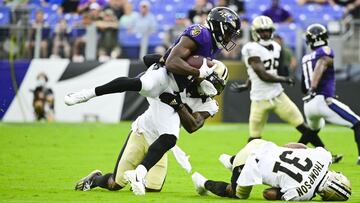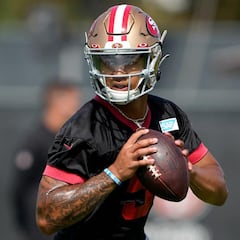What is the NFL concussion protocol?
Head injuries simply used to be all in a day’s work for football players. But research has shown that they cause serious neurological problems, giving birth to the NFL concussion protocol.

Head injuries simply used to be all in a day’s work for football players. But research has shown that they cause serious neurological problems, giving birth to the NFL concussion protocol.
Link between concussions and CTE
Studies have found a connection between repeated blows to the head and chronic traumatic encephalopathy or CTE. This degenerative brain disease can cause depression, anxiety, memory loss, and dementia.
The brains of NFL players were among 1,000 that were part of a study on brain trauma, and around two-thirds of the total sample were found to have CTE.
Other NFL stories:
- Did NFL football players get the covid-19 vaccine for the preseason?
- Grid Iron action returns in 2021
NFL creates concussion protocol
The National Football League has created policies to address head injuries, and the NFL concussion protocol is the first line of defense on game day.
The protocol aims to identify and treat concussions in the NFL more quickly.
During each game, there are assigned spotters who monitor the players on the field. If they see an impact to the head, they call a timeout. The player is escorted off the field to be examined and evaluated.
Aside from the spotters, other people can initiate the protocol, including the team trainer, coach or physician, NFL game officials, and the player’s teammate.
If signs of a concussion are spotted, the player will be brought to the medical tent, locker room, or hospital for further examination.
5-step return-to-participation process
After being sidelined, the player must undergo a five-step process before being allowed to take the field again.
The first step involves rest and limiting activities which may increase or worsen symptoms. The player may do stretching and balance activities. If the patient does not develop signs of a concussion, he may be cleared to go to the next phase.
Phase two involves the start of a graduated aerobic exercise program. He must show that he can engage in cardiovascular exercise without aggravating his symptoms.
In phase three, the player will engage in exercises that begin to mimic football-specific activities. He may also practice supervised strength training.
In the fourth phase, the patient may participate in club-based non-contact training drills. These include throwing, catching, and running.
Related stories
The fifth and final phase involves taking part in full football practice, with full contact. Once the player has thoroughly practiced, the next step is being cleared by the Club physician.
After that, he must be examined by the Independent Neurological Consultant. If cleared, he will be allowed to play in the next game.
Chiefs players not expected to play tonight are LB Willie Gay (recently on concussion protocol), WR Antonio Callaway (bone bruise), OL Kyle Long (knee, PUP list), OL Mike Remmers (back), OL Laurent Duvernay-Tardif (hand).
— Herbie Teope (@HerbieTeope) August 14, 2021

